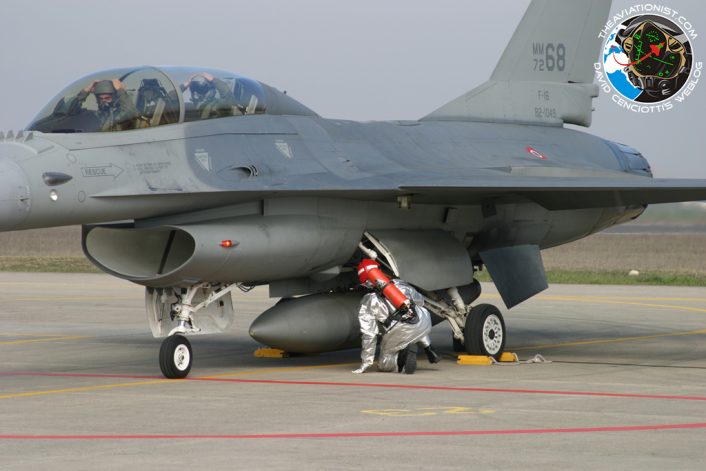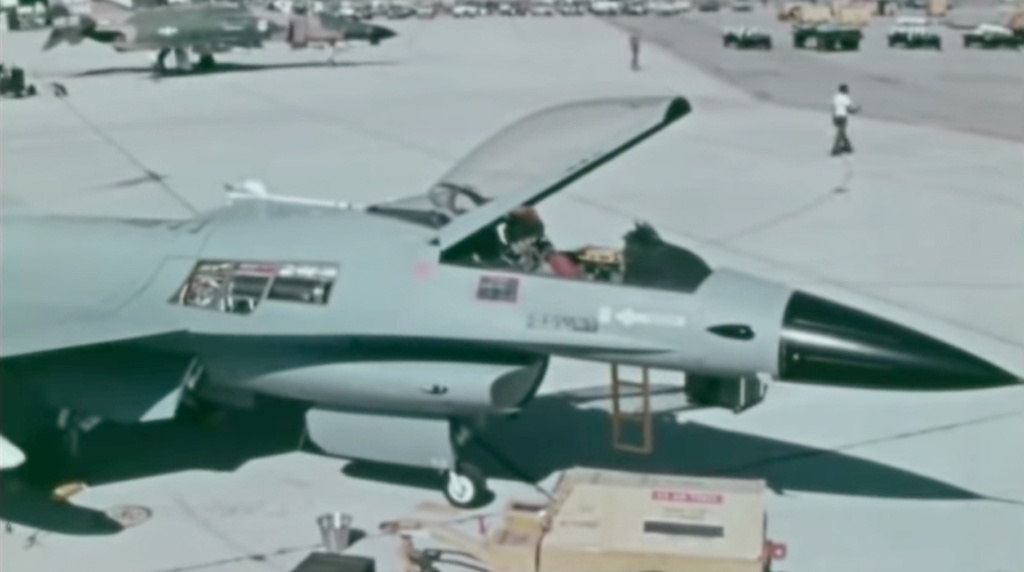Hydrazine is a colorless liquid that feeds the electrical systems and the EPU (Emergency Power Unit) as part of a backup power system on the F-16. And it can be extremely dangerous. This retro video explains why.
The video in this post was produced by U.S. Air Force Aerospace Audiovisual Service in the late 1970s by the Military Airlift Command (MAC), headquartered at Scott Air Force Base, Illinois, to highlight the risks of Hydrazine, that powered (and still powers) the F-16’s EPU. When activated, the Emergency Power Unit provides emergency power for the Electric Jet’s systems in the case of an electrical failure: in case of flame-out, emergency power generated by the EPU is designed to give pilots the time they need to land the aircraft safely.
Hydrazine (H-70) is a highly toxic and inflammable chemical (70% Hydrazine and 30% water), used also in missile propulsion systems, that can be mistaken for water but smells more or less like ammonia. As explained in details in a previous post, the toxicity of H-70 is such that special procedures must be used to manage crashes as well as in-flight emergencies that involved the EPU or hydrazine leaks. Today, each squadron equipped with F-16s must be able to respond to emergencies when use of the H-70 has been indicated, either by the pilot, or the small indicators located in multiple locations on the aircraft. Periodic training is carried out to ensure the readiness of the response teams in case of this type of emergency.
Depending on the duration of the exposure, H-70 vapors can be extremely dangerous for the human health. According to the U.S. Air Force, “vapors can cause irritation to the eyes and respiratory tract. Short term exposure may cause tremors, while prolonged exposure may cause damage to the liver and kidneys, possibly convulsions or death.”

The hazard of exposure to hydrazine were already well known at the end of the 1970s, when the F-16 was entering active service in the U.S. Air Force, and this video provides an overview of both the short and long term exposure risks and the procedures used by ground crews to respond to possible hydrazine leaks. The effects of prolonged exposure to H-70 in the humans mentioned in the film are kidney damage, liver damage, and potentially cancer. “While high exposures to hydrazine have been shown to cause cancer in mice, no studies link cancer in humans to hydrazine,” the documentary says.
The F-16 shown in the video is particularly interesting: it’s an F-16A, s/n #50748, the fourth FSD (Full Scale Development) aircraft. In fact, in January 1975, the U.S. Air Force ordered eight full-scale development (FSD) F-16s, six single-seat F-16As and two two-seat F-16B. Over the years, these FSD aircraft (that differed from the YF-16 for a stretched fuselage and nose, an increased wing area and horizontal tailplane, along with an additional underwing hardpoint) were used as test demonstrators for a variety of research, development and modification study programs. And also to film safety videos like the one below.
The vintage footage is also interesting because it shows procedures that airmed had to use in case they came in contact with Hydrazine: we can see one who quickly washes his arm, another who rinses his eyes out at a fountain and a doctor examining an airman’s arm. Then, a containment procedure is shown, with specialists working to clean a spill following a workflow that, protective gear aside, appears to be similar to the one I observed at an Italian Air Force F-16 base in 2004.













